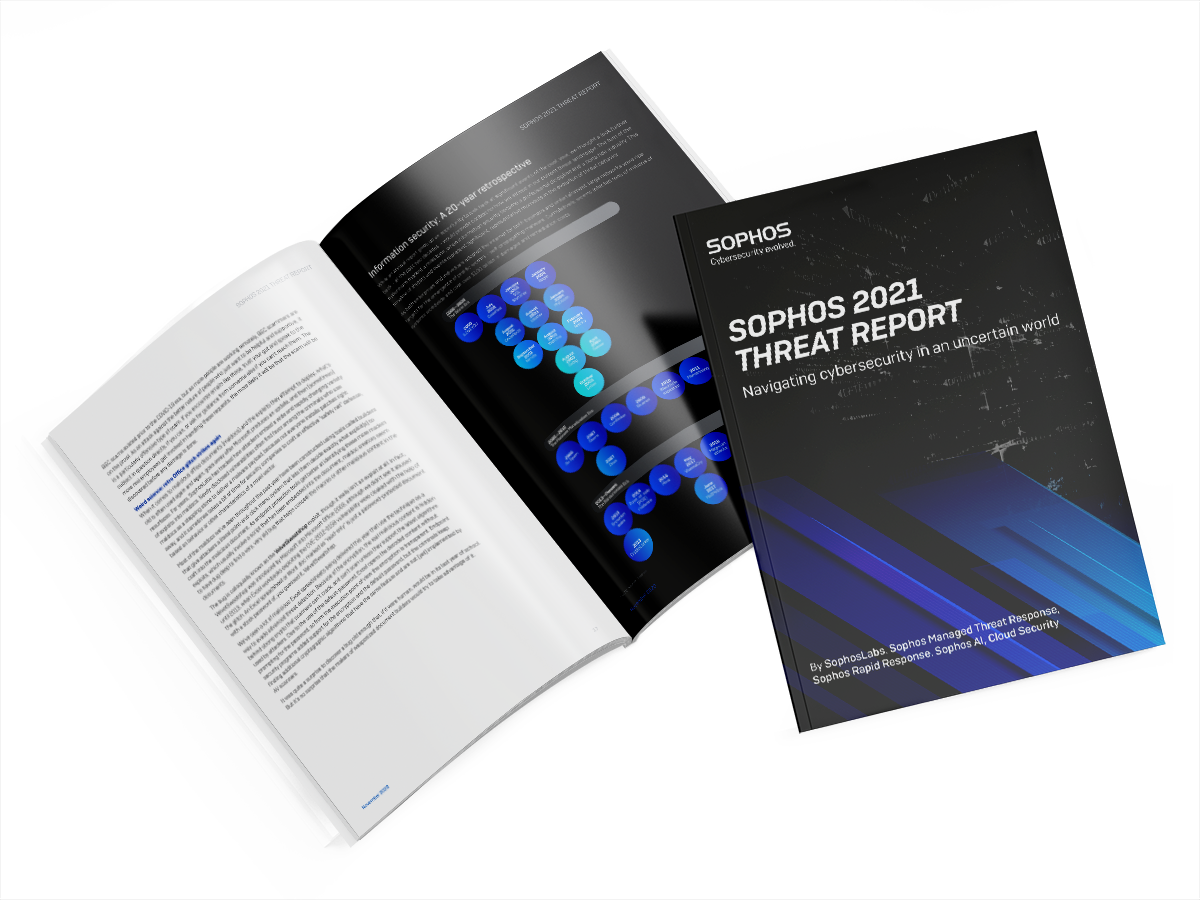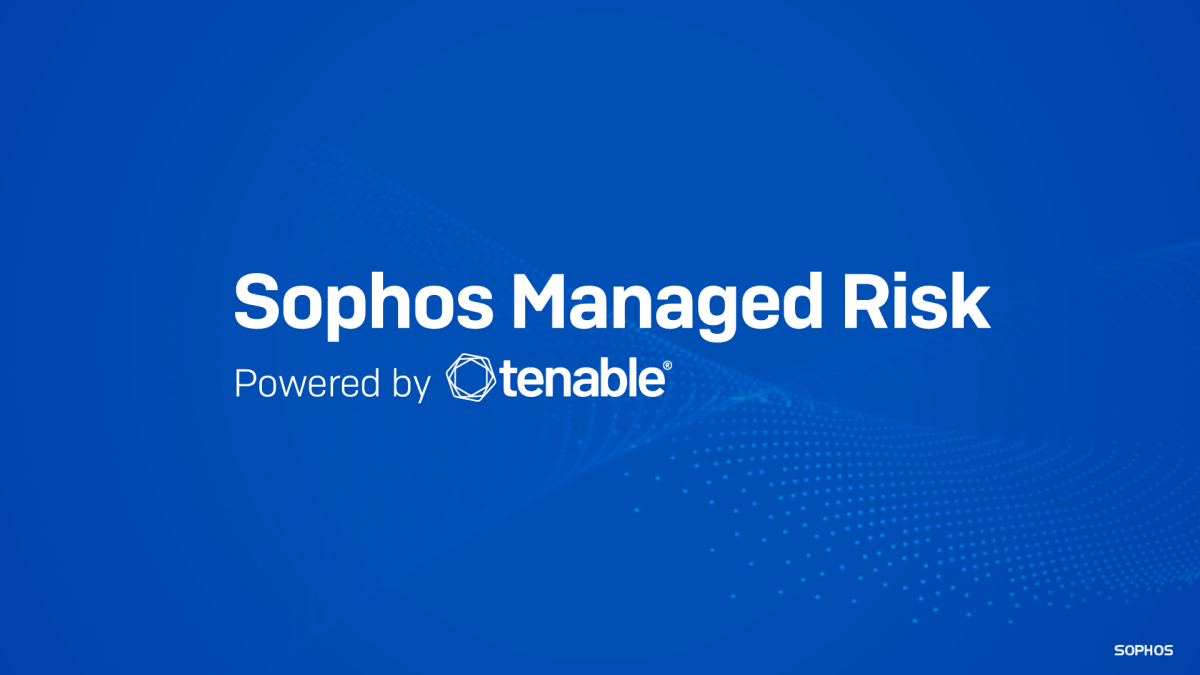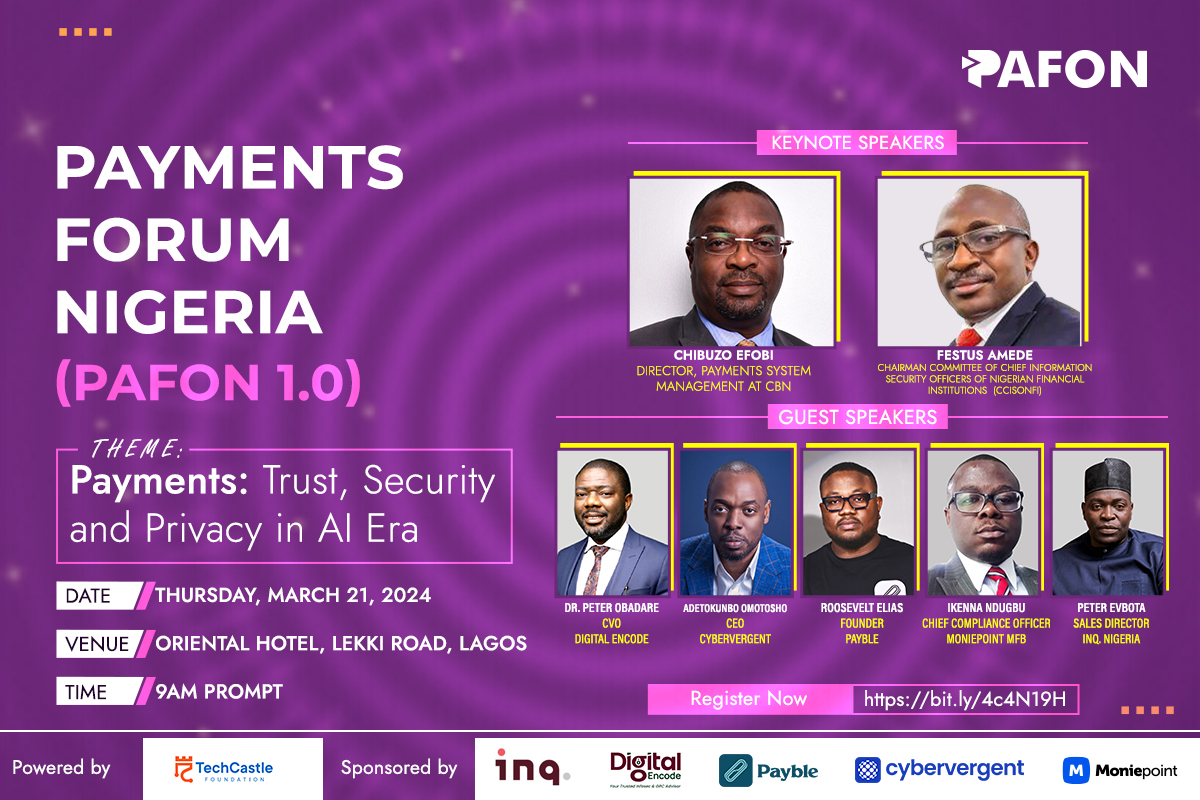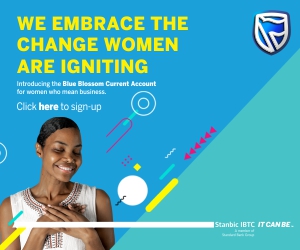GRTech
Sophos Threat Report Flags Cyberattack Trends Expected To Shape IT Security In 2021


Sophos, a global leader in next-generation cybersecurity, today published the Sophos 2021 Threat Report, which flags how ransomware and fast-changing attacker behaviors, from advanced to entry level, will shape the threat landscape and IT security in 2021.
The report, written by SophosLabs security researchers, as well as Sophos’ threat hunters, rapid responders, and cloud security and AI experts, provides a three-dimensional perspective on security threats and trends, from their inception to real-world impact.
Three key trends analyzed in the Sophos 2021 Threat Report include:
1. The gap between ransomware operators at different ends of the skills and resource spectrum will increase. At the high end, the big-game hunting ransomware families will continue to refine and change their tactics, techniques and procedures (TTPs) to become more evasive and nation-state-like in sophistication, targeting larger organizations with multimillion-dollar ransom demands. In 2020, such families included Ryuk and RagnarLocker.
At the other end of the spectrum, Sophos anticipates an increase in the number of entry level, apprentice-type attackers looking for menu-driven, ransomware-for-rent, such as Dharma, that allows them to target high volumes of smaller prey.
Another ransomware trend is “secondary extortion,” where alongside the data encryption the attackers steal and threaten to publish sensitive or confidential information, if their demands are not met. In 2020, Sophos reported on Maze, RagnarLocker, Netwalker, REvil, and others using this approach.
“The ransomware business model is dynamic and complex. During 2020, Sophos saw a clear trend towards adversaries differentiating themselves in terms of their skills and targets. However, we’ve also seen ransomware families sharing best-of-breed tools and forming self-styled collaborative ‘cartels,’” said Chester Wisniewski, principal research scientist, Sophos.
“Some, like Maze, appeared to pack their bags and head for a life of leisure, except that some of their tools and techniques have resurfaced under the guise of a newcomer, Egregor. The cyberthreat landscape abhors a vacuum.
If one threat disappears another one will quickly take its place. In many ways, it is almost impossible to predict where ransomware will go next, but the attack trends discussed in Sophos’ threat report this year are likely to continue into 2021.”
2. Everyday threats such as commodity malware, including loaders and botnets, or human-operated Initial Access Brokers, will demand serious security attention. Such threats can seem like low level malware noise, but they are designed to secure a foothold in a target, gather essential data and share data back to a command-and-control network that will provide further instructions.
If human operators are behind these types of threats, they’ll review every compromised machine for its geolocation and other signs of high value, and then sell access to the most lucrative targets to the highest bidder, such as a major ransomware operation. For instance, in 2020, Ryuk used Buer Loader to deliver its ransomware.
“Commodity malware can seem like a sandstorm of low-level noise clogging up the security alert system. From what Sophos analyzed, it is clear that defenders need to take these attacks seriously, because of where they might lead.
Any infection can lead to every infection. Many security teams will feel that once malware has been blocked or removed and the compromised machine cleaned, the incident has been prevented,” said Wisniewski.
“They may not realize that the attack was likely against more than one machine and that seemingly common malware like Emotet and Buer Loader can lead to Ryuk, Netwalker and other advanced attacks, which IT may not notice until the ransomware deploys, possibly in the middle of the night or on the weekend. Underestimating ‘minor’ infections could prove very costly.”
3. All ranks of adversaries will increasingly abuse legitimate tools, well known utilities and common network destinations to evade detection and security measures and thwart analysis and attribution.
The abuse of legitimate tools enables adversaries to stay under the radar while they move around the network until they are ready to launch the main part of the attack, such as ransomware. For nation-state-sponsored attackers, there is the additional benefit that using common tools makes attribution harder. In 2020, Sophos reported on the wide range of standard attack tools now being used by adversaries.
“The abuse of everyday tools and techniques to disguise an active attack featured prominently in Sophos’ review of the threat landscape during 2020. This technique challenges traditional security approaches because the appearance of known tools doesn’t automatically trigger a red flag.
This is where the rapidly growing field of human-led threat hunting and managed threat response really comes into its own,” said Wisniewski. “Human experts know the subtle anomalies and traces to look for, such as a legitimate tool being used at the wrong time or in the wrong place.
To trained threat hunters or IT managers using endpoint detection and response (EDR) features, these signs are valuable tripwires that can alert security teams to a potential intruder and an attack underway.”
Additional trends analyzed in the Sophos 2021 Threat Report include:
· Attacks on servers: adversaries have targeted server platforms running both Windows and Linux, and leveraged these platforms to attack organizations from within
· The impact of the COVID 19 pandemic on IT security, such as the security challenges of working from home using personal networks protected by widely varying levels of security
· The security challenges facing cloud environments: cloud computing has successfully borne the brunt of a lot of the enterprise needs for secure computing environments, but faces challenges different to those of a traditional enterprise network
· Common services like RDP and VPN concentrators, which remain a focus for attacks on the network perimeter. Attackers also use RDP to move laterally within breached networks
· Software applications traditionally flagged as “potentially unwanted” because they delivered a plethora of advertisements, but engaged in tactics that are increasingly indistinguishable from overt malware
· The surprising reappearance of an old bug, VelvetSweatshop – a default password feature for earlier versions of Microsoft Excel – used to conceal macros or other malicious content in documents and evade advanced threat detection
· The need to apply approaches from epidemiology to quantify unseen, undetected and unknown cyberthreats in order to better bridge gaps in detection, assess risk and define priorities
Sophos’ Wisniewski provides an overview of the Sophos 2021 Threat Report in the video below:
GRTech
Sophos Partners with Tenable to Launch New Sophos Managed Risk Service


. New Fully Managed Solution Provides Visibility, Risk Monitoring, Prioritization, Investigation, and Proactive Notification to Prevent Cyberattacks
April 4, 2024 – Sophos, a global leader of innovative security solutions that defeat cyberattacks, today announced a strategic partnership with Tenable, the Exposure Management company, to provide Sophos Managed Risk, a worldwide vulnerability and attack surface management service.
The new service features a dedicated Sophos team that leverages Tenable’s exposure management technology and collaborates with the security operations experts from Sophos Managed Detection and Response (MDR) to provide attack surface visibility, continuous risk monitoring, vulnerability prioritization, investigation, and proactive notification designed to prevent cyberattacks.
The modern attack surface has expanded beyond traditional on-premises IT boundaries, with organizations operating frequently unknown numbers of external and internet-facing assets that are unpatched or under protected, leaving them vulnerable to cyberattackers.
This is evident in the newest Sophos Active Adversary Report, also released, which identifies three tasks that organizations must prioritize to minimize the risk of brazen intrusions that lead to ransomware or other types of attacks.
These include closing exposed Remote Desktop Protocol (RDP) access, enabling multi-factor authorization and patching vulnerable servers, all of which were top entry points in breaches handled by Sophos Incident Response in 2023.
The Sophos Managed Risk service can assess an organization’s external attack surface, prioritize the riskiest exposures, such as open RDP, and provide tailored remediation guidance to help eliminate blind spots and stay ahead of potentially devastating attacks.
“Sophos and Tenable are two industry security leaders coming together to address urgent, pervasive security challenges that organizations continuously struggle to control. We can now help organizations identify and prioritize the remediation of vulnerabilities in external assets, devices and software that are often overlooked. It is critical that organizations manage these exposure risks, because unattended, they only lead to more costly and time-consuming issues and are often the root causes of significant breaches,” said Rob Harrison, senior vice president for endpoint and security operations product management at Sophos. “We know from Sophos’ worldwide survey data that 32% of ransomware attacks start with an unpatched vulnerability and that these attacks are the most expensive to remediate. The ideal security layers to prevent these issues include an active approach to improving security postures by minimizing the chances of a breach with Sophos Managed Risk, Sophos Endpoint, and 24×7 Sophos MDR coverage.”
“While the latest zero day may dominate the headlines, the biggest threat to organizations, by a large margin, is still known vulnerabilities – or vulnerabilities for which patches are readily available,” said Greg Goetz, vice president of global strategic partners and MSSP, Tenable. “A winning approach includes risk-based prioritization with context-driven analytics to proactively address exposures before they become a problem. Sophos Managed Risk, powered by the Tenable One Exposure Management Platform, delivers outsourced preventive risk management, enabling organizations to anticipate attacks and reduce cyber risk.”
Specific key benefits of Sophos Managed Risk include:
- External Attack Surface Management (EASM): Advanced identification and classification of internet-facing assets, such as web and email servers, web applications, and public-facing API endpoints
- Continuous monitoring and proactive notification of high-risk exposures: Proactive notification when a new critical vulnerability is identified in an organization’s internet-facing assets
- Vulnerability prioritization and identification of new risks: Swift detection of high-risk and zero-day vulnerabilities, followed by real-time notification to ensure critical internet-facing assets are promptly identified, investigated and responded to by order of importance
“One of the biggest challenges organizations face when improving their security posture is prioritizing what to handle first. This type of guidance helps solve that issue and reduces the workload for security teams tasked with tackling vulnerability and exposure management,” said Craig Robinson, research vice president of Security Services, IDC. “Solutions such as Sophos Managed Risk can be a differentiator by enabling overwhelmed teams to take a more holistic approach to continuous monitoring and threat management.”
Sophos Managed Risk is available as an extended service with Sophos MDR, which already protects more than 21,000 organizations globally. The Sophos Managed Risk team is Tenable-certified and works closely with Sophos MDR to share essential information about zero-days, known vulnerabilities and exposure risks to assess and investigate possibly exploited environments.
“Sophos Managed Risk simplifies the difficult and resource consuming task of identifying vulnerabilities, really understanding the extent of risk exposure, and prioritizing necessary remediations,” said Kieron Stone, cybersecurity business development manager at Phoenix Software Ltd. “As a trusted managed service provider (MSP), this is a service we’re proud to stand behind, and nearly all our customers using it have already discovered significant vulnerabilities that they were previously unaware of. For organizations that don’t already have a well-defined vulnerability patching cadence, this is a must-have service for the identification of vulnerabilities and building that schedule; and for organizations that are already managing vulnerabilities, it’s a second set of eyes for added peace of mind that they’re not missing anything.”
Organizations benefit through regular interaction, including scheduled meetings with Sophos experts to review recent discoveries, insights into the current threat landscape, and recommendations for remediation and prioritizing actions. Additionally, organizations can initiate inquiries via the Sophos Central platform, allowing users to directly engage with the Sophos Managed Risk team for tailored support, reports and to review their latest prioritized alerts.
“You can’t fix what you can’t see. Sophos Managed Risk is shining a light on areas of exposure that require remediation in order to keep customers protected. Combining Sophos’ elite MDR experts with Tenable’s industry-leading exposure management technology gives us a full picture view of vulnerabilities with the guidance we need to minimize risk,” said Brooks Roy, president at Communications Consulting, Inc. “The real value add for us as a channel partner is having the ability to easily manage Sophos Managed Risk’s prioritized alerts across our customer base on the Sophos Central dashboard.”
Sophos Managed Risk is available with a term license through Sophos’ global network of channel partners and Managed Service Providers (MSPs). A Sophos MSP Flex version will be available in 2024.
TechNews
inq.Digital Supports Payments Forum Nigeria [PAFON 1.0]


Inq. Digital Nigeria Limited has been announced as a sponsor of Payments Forum Nigeria [PAFON 1.0] maiden edition holding this Thursday in Lagos.
inq. Digital Nigeria Limited, a subsidiary of inq. Group is an emerging leading digital and cloud solutions provider that delivers simpler seamless solutions to complex business challenges.
With offices in Lagos, Abuja, Port Harcourt and Kano, inq. provides reliable and affordable Intelligent Connectivity, SDN/NFV, Cloud and Digital services (including Edge –AI) for Nigerian businesses including those in the payment space.
Participation is FREE, however, pre-registration is required: https://bit.ly/4c4N19H.
Speaking ahead of Payments Forum Nigeria [PAFON 1,0] scheduled to take place at Oriental Hotel, Lekki Road, Lagos on Thursday, March 21, 2024 by 9am under the theme: “Payments: Trust, Security and Privacy in AI Era”, Mr. Chike Onwuegbuchi, the co-founder of TechCastle Foundation, the organisers, said the goal is to enable information exchange and knowledge sharing on key industry insights issues amongst key stakeholders, with the objective of ensuring a collaborative and proactive approach to push for policies that enable growth, tackling/mitigating fraud and limiting occurrences and losses.
Speakers
The following speakers are lined up for the Forum: Chibuzo Efobi, Director, Payments System Management, Central Bank of Nigeria (CBN); Festus Amede, Chairman, Committee of Chief Information Security Officers of Nigerian Financial institutions (CCISONFI; Dr. Adewale Peter Obadare, Chief Visionary Officer (CVO), Digital Encode Limited; Adetokunbo Omotosho, Chief Executive Officer, Cybervergent; Roosevelt Elias, Founder, Payble; Ikenna Ndugbu, chief compliance officer, Moniepoint MFB, and Peter Evbota, Sales Director at inq. Digital Nigeria Limited.
Payments Forum Nigeria is organised by TechCastle Foundation and sponsored by: inq. Digital Nigeria Limited, Cybervergent, Moniepoint, Digital Encode Limited, Payble with support from the Central Bank of Nigeria (CBN).
GRTech
S Mobile Tech Hub Opens Registration to Entrepreneurs in Southeast


• 500 successful candidates to get starter-packs
• Rolls our Free Data, Airtime to Civil Servants, Students, others
S Mobile Tech Hub, an offspring of S Mobile Group has open applications to technology entrepreneurs in the Southeast Nigeria.
S Mobile Tech Hub was recently conceived by Mr. Kingsley Adonu, a visionary entrepreneur and CEO/Founder S Mobile Group, who aims to manifest the Group’s deliberate programmes towards building a dynamic and vibrant startup ecosystem in eastern region of the country.
APPLY by visiting www.smobilegroup.com to register.
Speaking against this backdrop, Mr. Adonu, said that even against tremendous challenges faced by the youth in the Southeast, they must be actively engaged in digital skills development in order to eschew social vices and make positive contributions towards maintaining peace and progress in the region.
“Unfortunately, a lot of our young people are facing numerous barriers to participating in formal and informal sectors today. In December 2015, the United Nations Security Council adopted UNSCR 2250 on Youth, Peace and Security. The resolution was the first to recognise the important role young people can play in preventing conflicts, and sustaining peace.
“It is on this premise and more that S Mobile is thinking out of the box by extending digital skills programmes to empower the youth to be more economically relevant. This will also go a long way in supporting the efforts of the Governors in the Southeast who are not resting on their oars until we have crime-free society with less poverty index.
“S Mobile Tech Hub has been positioned as a platform for entrepreneurs to leverage trends to accelerate their skills and innovation especially in the areas of artificial intelligence, robotics, big data, etc., which have become embedded in our daily lives.
“We are rolling out free data and airtime to civil servants, students, farmers and other entrepreneurs, for connecting with MTN Nigeria services.
Also during the cohort 1 of S Mobile Tech Hub programme 500 successful technology entrepreneurs across the Southeast region will be sponsored with the starter-tools to live their dreams.
“Together, let’s turn technology into your personal pathway to empowerment, growth, and societal well-being. Don’t just dream about a brighter tomorrow; let’s build it together today!”, the company said on Wednesday.
-



 Transport4 days ago
Transport4 days agoFederal Government To Launch Out 2700 CNG Buses, Tricycles Ahead Of First anniversary Of Tinubu’s Administration
-



 News4 days ago
News4 days agoNigeria Has Secured $2.25B World Bank Loan With An Interest Rate Of 1% – Minister Of Finance
-



 Tech23 hours ago
Tech23 hours agoAnambra School Emerges Winner In National Girls In ICT Competition With Groundbreaking VR Technology
-



 News1 day ago
News1 day agoNiger State Prisoners Run From Facility After Rainstorm Brings Down Part Of Fencing
-



 Finance3 days ago
Finance3 days agoGodwin Emefiele Disobeyed Direction Of Law With Intent To Harm The Public, He Printed ₦684.5M Using ₦18.9B Says EFCC in fresh charge
-



 Spotlight1 day ago
Spotlight1 day agoNigerian Woman Breaks Guinness World Record With 55-Hour Interview Marathon
-



 News3 days ago
News3 days agoEFCC: Former Governor Of Kogi State, Yahaya Bello Fails To Show Up In Court, Says He Is Scared Of Arrest
-



 Politics18 hours ago
Politics18 hours agoEnugu State Government Flag Off Palliative Distribution In The State






